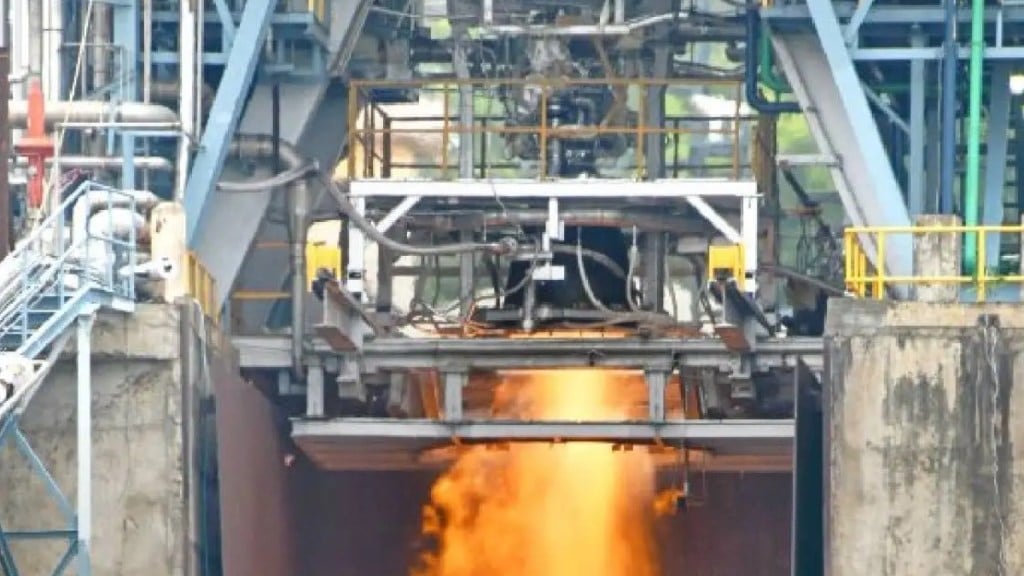On November 29, 2024, ISRO successfully conducted a sea-level test of its CE20 cryogenic engine at the ISRO Propulsion Complex in Mahendragiri, Tamil Nadu. This engine is special because it has a nozzle area ratio of 100, meaning the nozzle’s exit is 100 times larger than its narrowest part. This design helps the engine turn high-pressure gases into powerful thrust, making it ideal for launching heavy payloads into space.
During the test, ISRO also demonstrated the performance of a multi-element igniter, an important component needed to restart the engine in space. A multi-element igniter produces the flame needed to ignite the fuel and oxidizer, starting the engine. Restarting the engine is crucial for space missions, as it allows the spacecraft to make precise adjustments or change its path during the journey. This ability ensures greater flexibility and control in space operations.
However, according to Bengaluru based Space Analyst Girish Linganna, “testing the CE20 engine at sea level is not easy due to its high nozzle area ratio. The nozzle’s design results in an extremely low exit pressure of around 50 mbar, much lower than the atmospheric pressure at sea level, which is about 1013 mbar. This means the engine is built to perform best in the vacuum of space, and testing it on Earth requires engineers to tackle significant challenges.”
According to Linganna, “one major challenge during sea-level testing is the risk of flow separation inside the nozzle. This occurs when high-speed gases fail to flow smoothly along the nozzle walls, breaking apart instead. This can cause strong vibrations and excessive heat at the separation point, known as the flow separation plane. These conditions can damage the nozzle, potentially causing cracks or other mechanical problems. While this isn’t an issue in space due to the vacuum, it must be carefully managed during tests on Earth.”
ISRO Conducts Flight Acceptance Tests
To solve this, ISRO conducts flight acceptance tests for the CE20 engine at the High-Altitude Test (HAT) facility. This facility, located at the ISRO Propulsion Complex in Mahendragiri, is designed to replicate the low-pressure environment of space, making it possible to test engines like the CE20 effectively. However, testing at the HAT facility adds complexity to the process.
To make testing simpler and more cost-effective, ISRO has developed a new sea-level testing method using an innovative Nozzle Protection System. This approach reduces the challenges usually faced during testing and provides a practical way to ensure the cryogenic engines are ready for space missions.
“Restarting a cryogenic engine is a challenging process. One of the main difficulties is igniting the engine in the vacuum of space without closing the nozzle. Another challenge is using a multi-element igniter to ensure the ignition process is reliable and smooth. In simple terms, starting the engine in space, where there is no air, requires a specially designed igniter that can create a strong and steady flame to power the engine,” he explains.
ISRO has already demonstrated that the CE20 engine can be ignited in a vacuum without needing to close the nozzle. This was proven during earlier ground tests. In the recent test, ISRO focused on evaluating the performance of the multi-element igniter. During the test, only the first igniter element was activated to start the engine. At the same time, the condition and functionality of the other two elements were carefully monitored to ensure they were in good working order. This process confirms that the igniter is dependable and well-prepared for future space missions.
According to sources, during the test, both the engine and the testing facility operated smoothly, and the engine met all the expected performance standards as planned.
ISRO’s CE20 cryogenic engine, designed by the Liquid Propulsion Systems Centre, powers the upper stage of the LVM3 launch vehicle. This engine has been successfully tested to deliver a thrust of 19 tonnes.
This engine has already powered the upper stage of six LVM3 missions successfully. Recently, it was upgraded for the Gaganyaan mission to deliver a thrust of 20 tonnes. Additionally, it has been further enhanced to provide a thrust of 22 tonnes for the upcoming C32 stage, which will improve the LVM3 launch vehicle’s ability to carry heavier payloads in the future.

